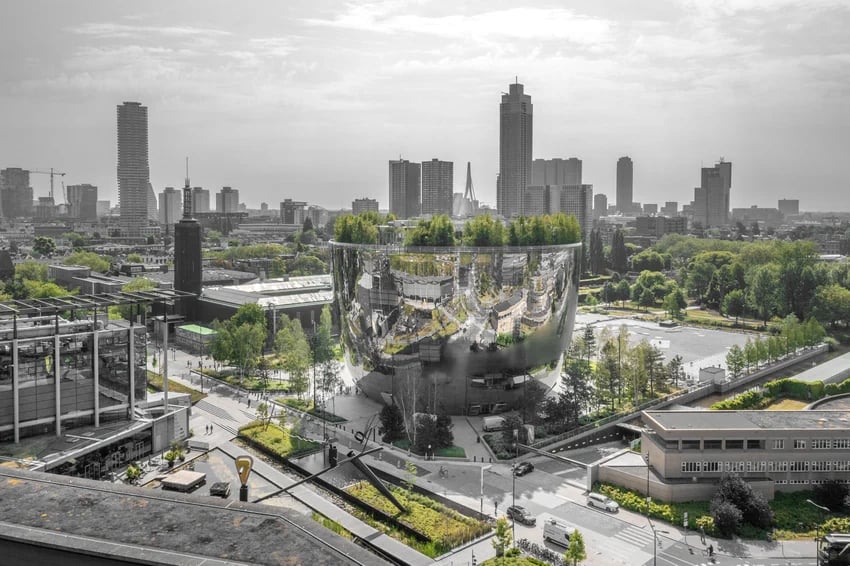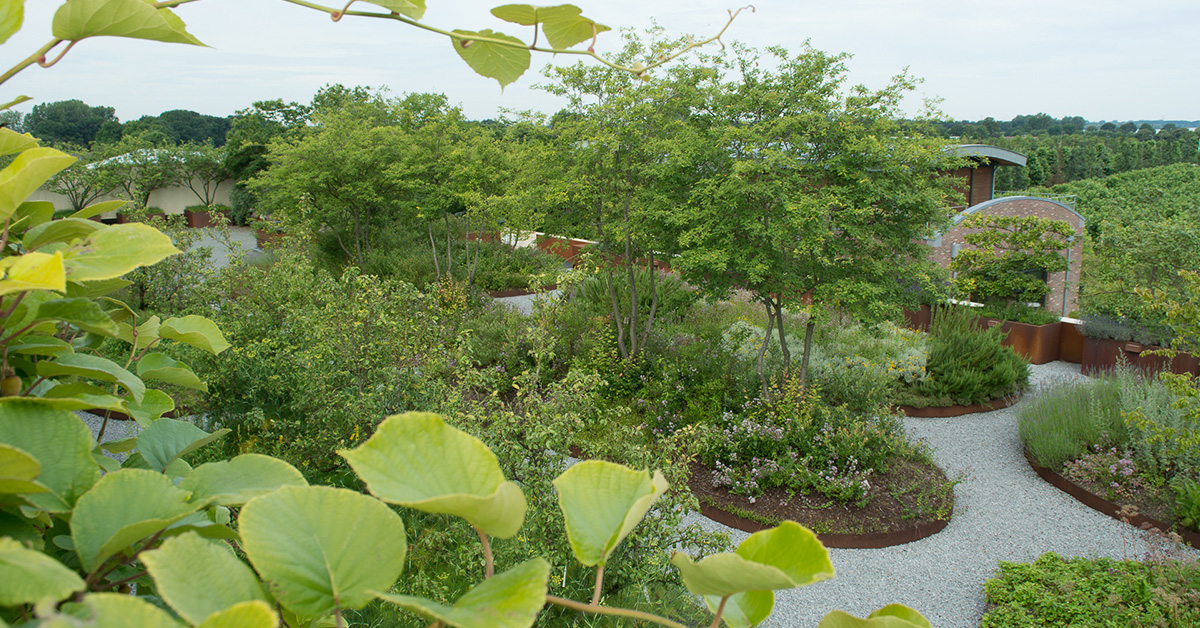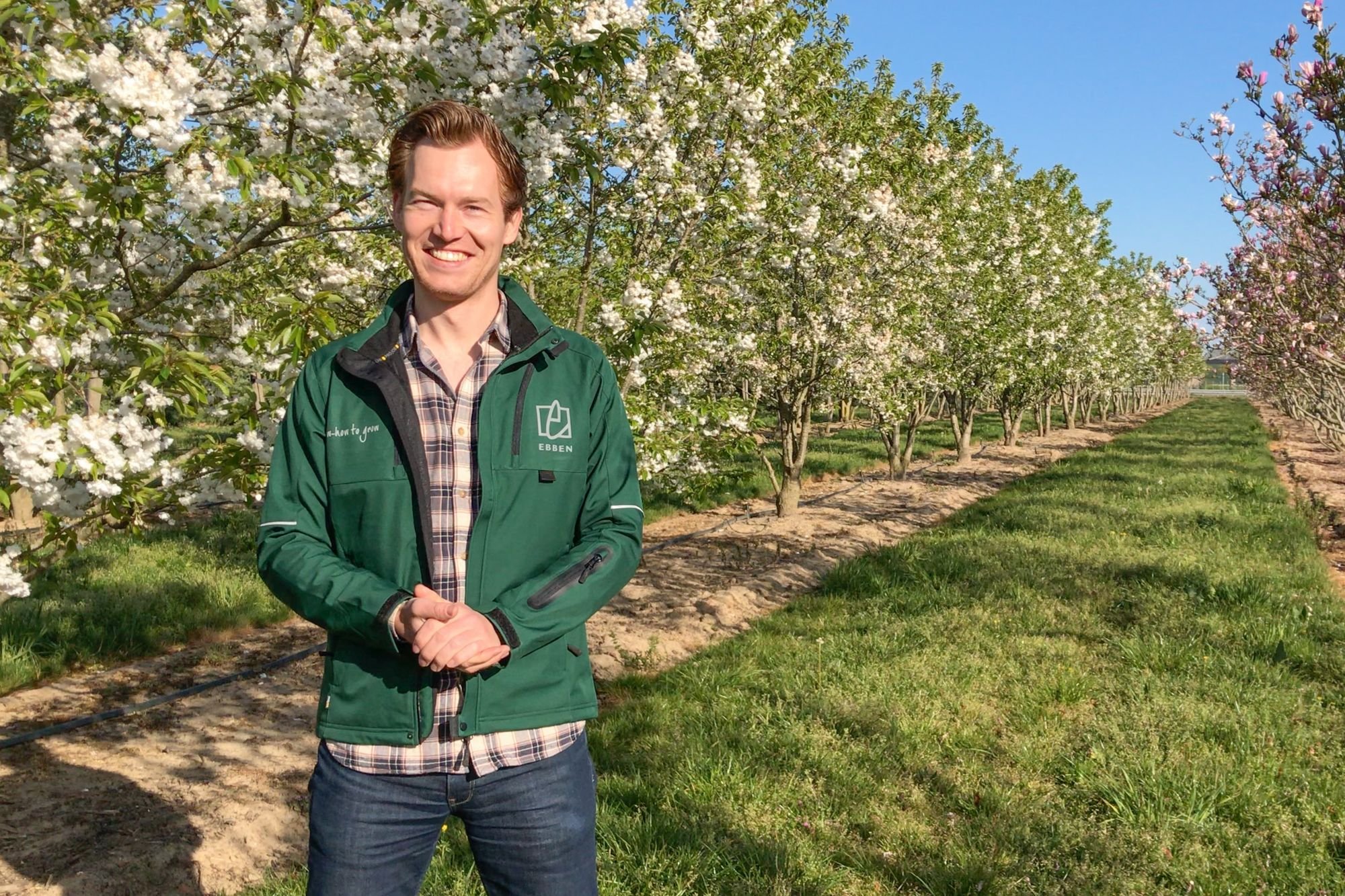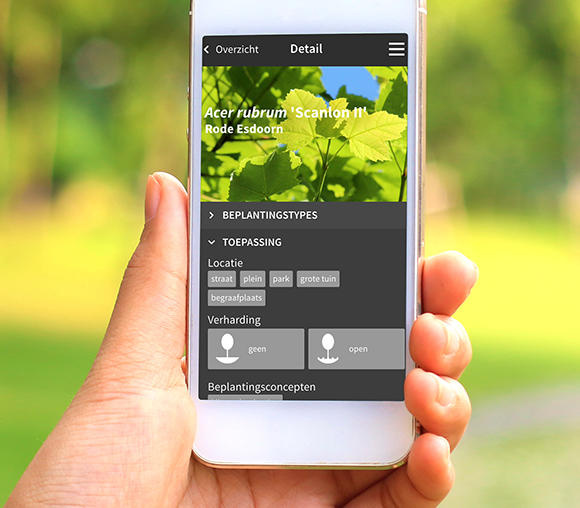How to select the perfect tree for a roof garden?

In the battle for urban space, greenery often loses out. Roofs are an excellent opportunity for actually greening up the city. Install a rooftop garden and add a green living space: a place for people, animals and insects. By far the most achievable option here is what is referred to as the intensive green roof. And if you want to improve the aesthetics, experience/enjoyment and functionality of a roof garden, there is the opportunity to add trees.
Every roof garden, be it gardens on the roofs of buildings or those above squares and parks on multi-storey parking decks, has its own challenges. These challenges can be
- Structural in nature and concern the roof's load-bearing capacity, weight and construction.
- Technical in nature and concern planting set-up and irrigation.
- Choice and available range: more extreme situations require a sophisticated planting design in which tree form, crown form and choice of species are paramount.
In this article, we provide you with guidance to help you choose the ideal tree or trees for your future rooftop garden.
No two roof gardens are alike
We can distinguish between different types of roof gardens. For instance, the street-level roof garden, constructed on a basement (car park), metro station or other underground infrastructure. Here, as is the case on every roof garden, grow space underground and depth of the substrate is limited but weather extremes such as wind are less pronounced. One level up, on a roof garden on the first or second floor, the conditions already become tougher: more wind and heat than on the ground floor. In addition, there is often less volume where the tree can develop deep roots because the higher the building, the more expensive it is to make the construction able to support a heavier grow kit. Larger roof gardens or terraces at height are often exposed to a lot of wind and sun. This limits the different greenery species that can be used. Finally, balconies are also a form of roof gardens. They are often smaller and situated on different sides of a building. Aspect relative to the direction of the wind largely determines the amount of wind and rain on the balcony and consequently which species are able to grow here.
Weather conditions on the rooftop garden
- Wind load
Wind is the single most defining element on roofs. The elevated position usually means no protection from the wind. If a roof garden is situated between other high buildings, wind tunnels are often created. Wind limits the growth of the tree and certain trees are better able to cope with wind than others. Trees that do not tolerate wind so well have more brittle branches or a very dense crown that catches a lot of wind, or are prone to wind-borne diseases. When choosing a suitable roof tree, the first thing to do is select a tree that is wind resistant. In doing so, it is important to know that the form of a tree in an extreme site such as a roof is largely shaped by the wind. Wind and variable airflows bend the branches and blow inside the crown. To compensate the tree sets buds and develops new branches. So, choose a tree with a fully developed crown at the nursery and one that has had supportive pruning. Due to wind load, multi-stem trees are the best option on account of their low centre of gravity. This is an important consideration, not least on roof edges where the effect of the wind is greatest. Multi-stem trees can often also be used to create a sheltered micro-climate in the centre of the roof garden in which less wind-resistant trees and tree forms can be used.
- Heat
Heat also plays a role. It makes quite a difference whether you are dealing with an open, unprotected and exposed situation or an enclosed patio with a glass façade that accumulates heat and sunlight. Not only does this affect what kind of greenery is used but also the entire experience and enjoyment of the roof garden. In cities there are also many reflective surfaces: not just glass but also light-coloured outside cladding and light-coloured paving have a major impact on the planting. For instance, the underside of leaves is less protected against radiation and foliage may burn because of reflective paving. Other than heat, an open location, exposed to the wind greatly affects how the vegetation dries out. Therefore, in many cases trees are chosen that can cope well with drought and enjoy a sunny site.

Watering and irrigation of the rooftop garden
Essential for every new planting scheme, on a roof or not, is the availability of sufficient water. Because a roof is an artificial ecosystem, for a relatively high up-front investment such as trees on roofs, a good irrigation system is necessary. Roof garden substrates contain a lot of air - which is important for trees - but often drain the water away quickly too. It is worthwhile investigating whether capillary water systems can be used to keep the substrate moist at all times and thus create a constant perched water table. If a lighter roof construction has been used, water storage on the roof often isn’t possible and an irrigation system with irrigation tubes will have to be used. In order to prevent frozen pipes, the irrigation must be closed off in the winter. No problem for most plants but evergreen trees can soon dry out because of the combined effects of wind, sun and frost. Additional aftercare is required in that case.
Size of tree on the rooftop garden
The size of trees on roofs is often a discussion point. Because of the more extreme conditions on roofs with the limited volume of substrate where the tree can develop deep roots, on one hand, and heat, dry weather and wind, on the other, trees on roofs will never attain the scale achieved in a park in the ideal growing place. When you restrict the extent of the roots you are also restricting the size of the crown. In exactly the same way as a bonsai tree functions. On a roof you are, in fact, always using a large bonsai, with the wind and dry conditions aiding the pruning process. For this reason, trees that become colossal in their natural habitat may also be used in some situations on roofs. For example, the large Pinus nigra and Betula pubescens on the storage facility of Boijmans Van Beuningen in Rotterdam. Or the elms on the Jaarbeursplein in Utrecht. For smaller roof gardens it is better to choose trees with a narrower size, open crowns and a surface root system that is not too dense.
The size of tree planted is often determined by the root ball and wind load and, therefore, by substrate density and weight that the roof construction can bear. In the roof garden design then the starting point should not simply be the above-ground size of the tree but you will also need to sketch in the size of root ball. This way it is possible to determine in which sites anchoring constructions have to be used. These are often stronger at the edges of roofs and on columns. Aesthetically too, it is interesting to use trees on the roof edge: it makes the roof garden much more visible from street level which arouses interest to walk towards it.
Urban Tree System
Due to its limited weight, an Urban Tree System (i.e. a smart tree planter featuring a sprung mechanism) enables use of a tree in a site where it otherwise would not be possible. A boomveer is a steel frame in which a tree is suspended. It allows for the impacts of the wind to be absorbed. This in combination with a specifically prepared root ball, fitted with irrigation and sensors, means you can plug & play.
Some rooftop garden favourites
Often these are trees also found growing naturally in open and extreme (pioneer) situations:
Acer campestre, Acer monspessulanum, Amelanchier lamarckii, Arbutus unedo, Betula pubescens, Cornus mas, Gymnocladus dioica, Malus toringo, Mespilus germanica, Osmanthus x burkwoodii, Pinus mugo, Pinus sylvestris ‘Watereri’, Pinus nigra, Pyrus calleryana ‘Chanticleer’, Quercus cerris, Tamarix ramosissima, Zelkova serrata
Our tip: create a mood board of trees selected based on factors such as growing conditions, dimensions, weight, root system, maintenance and appearance!












